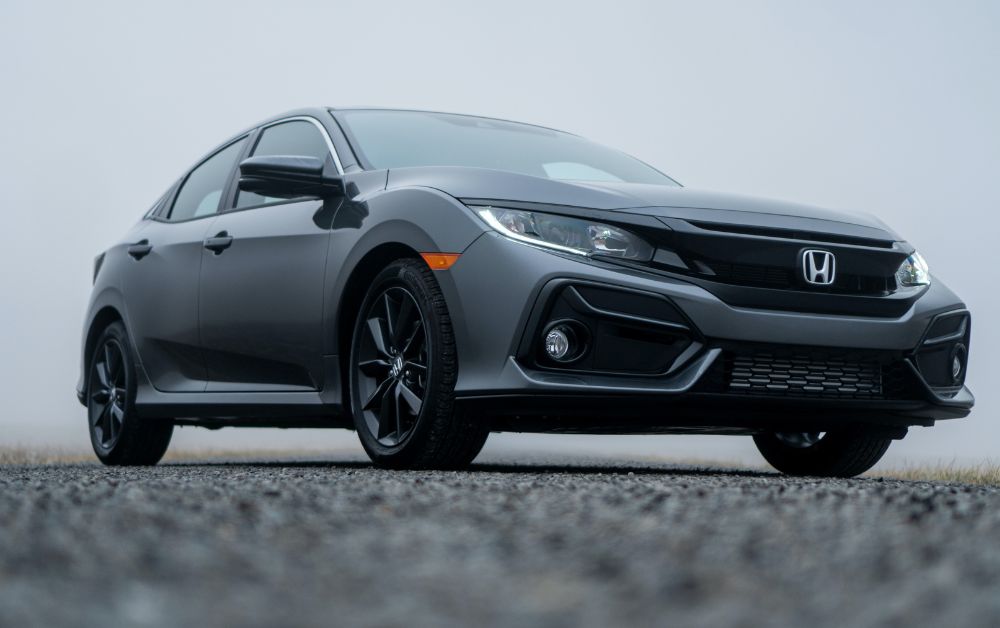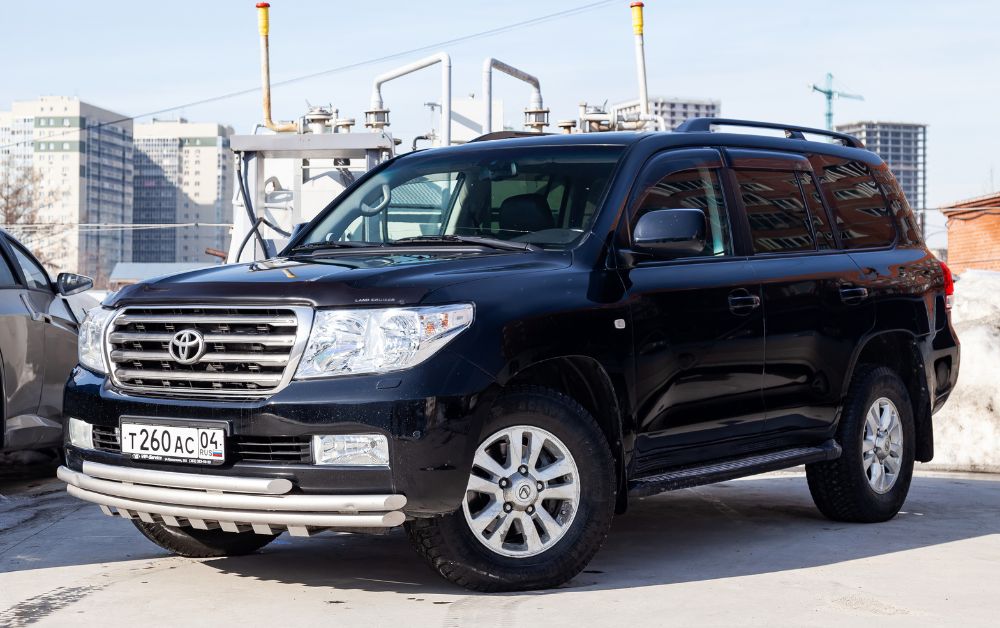Although Japan’s transportation system is incredibly efficient, having a personal vehicle can make life much more convenient, especially for families. A car gives you the flexibility to run errands, travel anytime without having to worry about train schedules, and explore beautiful destinations outside Tokyo that aren’t easily accessible. But you might find yourself wondering: how do you buy a car in Japan?
Buying a car from scratch in Japan can get quite complicated. Between paperwork, parking permits, and ongoing costs, there’s a lot to know before you start car shopping. In this guide, we will cover everything you need to know about buying a car in Japan (new or used), including requirements, costs, and tips to make the process smoother.
Can anyone buy a car in Japan?
Technically, anyone with a valid driving license or permit can purchase a vehicle in Japan, including foreigners with certain residence statuses. However, during the process, you might need to provide your registered address in Japan and a parking space certificate to purchase a car in Japan. Unfortunately, this often means that only foreigners with long-term residence statuses can buy and drive a car in Japan.
It is more complicated for short-term visitors or non-residents to buy a car. It might be possible to buy a car in Japan, but you would not be able to drive it legally on a public road.
General requirements for purchasing a car in Japan
There are several requirements you will need to be aware of when purchasing a car in Japan. As mentioned, you need to be living in Japan with a registered address as well as a parking certificate. So, when purchasing a vehicle in Japan, be sure to obtain the following documents:
- Residence card (在留カード, or zairyuu card): This is the card you receive upon entering Japan and displays your visa status, type, and residence information.
- Residence certificate (住民票, or juuminhyou ) from your local city office, which is either called kuyakusho (区役所, ward hall) or 市役所 (shiyakusho, city hall), depending on your area.
- Hanko or enkan (personal seal), which is a stamp that acts as your officially registered signature
- Parking space certificate (車庫証明, or shakou shoumei) issued by the police, confirming you have a legal parking spot. You can register your parking space by going to your local police station, which will give you a document once you have officially registered.
- Proof of insurance (Compulsory Automobile Liability Insurance, or JCI). Usually, new cars and used cars from large dealers will come with the JCI. You can buy more holistic insurance from other providers in addition to the JCI.
Where to buy a new car in Japan
Now, let’s talk about how to actually purchase a new car in Japan. From test driving different vehicles to the new car smell, this is all a part of the excitement of getting a new car. But before that, what do you need to know about buying a car in Japan, home to some of the biggest car makers in the world?
You can buy a car from dealerships across the nation. This ranges from domestic Japanese vehicle brands such as Honda, Toyota, Nissan, Mitsubishi, and Mazda, to Western and American brands.
How much does it cost to own a car, from average vehicle prices to additional fees?
Costs of a new car in Japan
The benefits of a new car are that most of the inspection fees and even the required insurance are included upon purchasing the car. Additionally, there are usually warranty and service packages that are included, especially at bigger dealerships. So, what are the average costs of buying a new car in Japan?
1. Kei cars (Light vehicles)

Short for kei-jidousha, which means light vehicle, these ultra-compact cars remain among the most affordable new vehicles. They usually seat around 4 people, and generally have smaller engines (generally 4 cylinders).
Common models:
- Honda N-Box: ¥1,500,000–¥2,000,000
- Suzuki Alto: ¥1,000,000–¥1,300,000
- Daihatsu Move: ¥1,200,000–¥1,600,000
- Nissan Dayz: ¥1,300,000–¥1,700,000
Specialty kei-vehicles:
- Suzuki Every Kei Van: around ¥1,917,000
- Mitsubishi Delica Mini (super-height kei): ¥1,804,000–¥2,238,500
2. Medium cars (Sedans, hatchbacks, compacts)

Medium cars are a bit more than kei cars but offer more room, such as trunk space, and can fit up to 5 passengers. These cars are popular for families with 1 or 2 kids due to the space and comfort.
Average price range: ¥2,000,000–¥3,500,000
Example models:
- Honda Fit: ~¥1,700,000
- Toyota Prius: ~¥2,400,000
- Lexus RX (luxury sedan/SUV): ~¥6,000,000
3. Larger Vehicles (SUVs, Vans) & Luxury Sedans

Unlike some countries, SUVs are not that popular in Japan. Part of the culture shock when you come to Japan might be seeing how small Japanese cars are compared to your home country! Still, you can find larger cars. These vehicles offer the most space for passengers and luggage. They are great for going camping or on long trips where you will need a lot of equipment. These vehicles are very popular with larger families.
SUV prices typically range from ¥2,500,000 to ¥9,000,000
Example Models:
- Toyota Minivans: ~¥3,000,000 – ¥10,000,000
- Toyota SUVs: ~¥3,000,000 – ¥8,000,000
Luxury sedans & performance models often exceed ¥10 million, especially if exported. Examples include:
- BMW 7 Series
- Mercedes S-Class
Payment options when you buy a car in Japan
Buying a new car is pretty expensive and perhaps one of the biggest purchases you can make (beyond a house), so what are your payment options in Japan?
1. Paying in cash
The first option will have the most expensive upfront costs, but will prevent any interest and will allow you to completely own your car immediately. However, this may not be an option since the total cost of a car is quite a lot to splurge in one go and may take time to save up for.
2. Car leasing
Car leasing is becoming a popular option due to its budget-friendly nature: you don’t need to worry about paying upfront costs or expenses like taxes, maintenance, and repairs, which are usually included in the monthly leasing fees. Leasing a car is similar to renting or leasing an apartment, where you just pay a fixed monthly fee to the leasing company.
You will need to return the car once the leasing period is over, and be aware that there could be other restrictions on how you can use the car, like mileage limits. This option may require longer-term visas and proof of stable income.
3. Receiving a car loan
This is probably the most popular option for paying off a car. Usually, a bank or other financial services provider provides a loan for you to pay for the car, and you pay them back in installments. This allows you to avoid huge upfront costs and pay for the vehicle in manageable chunks. You could even sell the car before you have completely paid off your loan.
In order for a foreign resident to receive a car loan, they would need a longer-term visa and proof of stable income.
Getting a Loan as a Foreigner:
Foreigners often struggle to get a loan due to a lack of credit history, which may make lenders hesitant, plus there might be language barriers when going to financial institutions for loans. However, many major dealerships (like Toyota or Honda) may have financing plans that are easier for foreigners to apply for.
Also, having a guarantor, holding a permanent or spousal residence, and a stable income can help with receiving these loans.
Purchasing a new car in Japan, like anywhere, is a significant investment and may be far from the most budget-friendly option, so how do used cars compare?
How to buy a used car in Japan
Buying a used car may be the most practical for foreigners with a certain budget. However, there are some risks involved. The good news is that there are a variety of options in Japan that can help mitigate these risks and make buying second-hand less stressful.
1. Authorized Dealerships (メーカー系中古車販売店)
Authorized and car maker-affiliated dealerships are considered to be the least risky and offer certified trade-in vehicles with a clear maintenance history.
Popular authorized dealers: Toyota U-Car, Honda Auto Terrace, Nissan Intelligent Choice.
Pros:
- Certified pre-owned cars with warranties.
- Full maintenance history provided.
- Reliable inspections and after-sales support.
- Best for: Buyers who want peace of mind, warranties, and robust support in case of problems.
Cons:
- Slightly higher prices compared to smaller dealers.
- Limited to a single brand (e.g., if it’s a Toyota dealership, it will only sell used Toyotas)
2. Independent Used Car Dealerships (中古車販売店)
These might be the most common media for purchasing used cars. Thousands exist across Japan, often selling all brands and models.
Popular used car dealers: Autobacs, Gulliver.
Pros:
- Wide selection of cars, often cheaper than authorized dealerships.
- Very accessible with many branches and chains throughout Japan.
- Can negotiate prices.
Cons:
- Warranty and after-sales support vary depending on the shop.
- Need to carefully check the car’s condition and the shaken certificate.
3. Online Platforms
One of the advantages of buying a used vehicle is the online options. There are plenty of used car websites that offer incredible convenience, such as options to directly compare prices and mileage.
Popular sites: Goo-Net, Car Sensor, Autotrader Japan.
Pros:
- Convenient browsing of thousands of listings.
- Easy to compare prices, mileage, and shaken validity.
Cons:
- You still need to visit the seller in person for final checks.
- Limited guarantees unless buying through a certified dealer.
4. Private sale
Of course, you can always purchase a car from an owner who wishes to sell their vehicle. You can find them through online platforms (which sometimes have verification systems in place to prevent scams) or flea markets.
Popular sites: Goo-Net, Car Sensor, Autotrader Japan
Pros:
- No dealership mark-ups, so you could potentially find the cheapest options
- No limitation in vehicle variety, great option if you’re on the lookout for rarer cars or classic models
Cons:
- Risky with no warranties, guarantees, services, or support
- Verification (accident reports, history) and paperwork are all on you
5. Car auctions (オークション)
Car auctions are often where dealers and exporters buy used cars, but foreigners can sometimes access auctions through intermediaries.
Pros:
- Lowest prices.
- Huge selection of vehicles.
Cons:
- No guarantees.
- Usually requires a Japanese intermediary and upfront cash.
- Riskier for first-time buyers.
What to look out for when buying a used car in Japan
No matter where you decide to get a used car, here are some considerations to keep in mind:
- Shaken validity: Cars with a recent shaken inspection are more valuable (and save you immediate costs).
- Maintenance records: Authorized dealers almost always provide full service history. Independent dealers may or may not.
- Mileage: Cars in Japan often have very low mileage compared to other countries.
- Accident history: Ask directly if the car has been in an accident; reputable dealers must disclose this.
- Warranty: Certified used cars usually come with 1 – 2 year warranties.
Tip on buying imported cars
Buying an imported car might seem like a good deal when purchasing second-hand, but expenses eventually accrue since parts are harder to come by, making repairs more expensive. Certain imported vehicles, such as German cars, have relatively less resale value due to the greater risk of needing repairs and parts being less available in Japan.

Costs of owning a vehicle in Japan
The expenses of a car don’t end after purchasing; there are a number of ongoing expenses that come with just owning a vehicle. Having a car in Japan can get pretty expensive. Here is a breakdown of all the things you have to pay for.
1. Shaken (車検)
A strict safety and emissions inspection is required by law. As mentioned, new cars come with a shaken that is valid for 3 years. But once those 3 years are up, you will need to go to a service station that provides shaken such as Yellohat.
Average validity period:
- New cars: 3 years
- Renewal every 2 years after the first shaken expires
Shaken includes: Inspection, compulsory liability insurance (JCI), weight tax, and basic maintenance.
Tip: Many foreigners are shocked by the shaken cost, but this system ensures Japan’s used cars are extremely well-maintained.
2. Engine weight tax
There are several taxes you must pay on your vehicle, some of which are included in the Shaken, while others must be paid separately. So, below are the vehicle taxes you pay on your car:
Vehicle acquisition tax (取得税)
- Paid once when you first purchase a new or used car.
- Varies by car type and eco-friendliness.
Vehicle weight tax (自動車重量税)
- Paid during shaken, based on vehicle weight, which is partly why heavier vehicles have pricier shaken
Annual automobile tax (自動車税 / 軽自動車税)
- Paid every year in spring (usually May).
3. Insurance
In Japan, you must at a minimum have the compulsory liability insurance called jibaiseki hoken (自賠責保険) in order to own a car. There is an optional insurance known as Ninni hoken (任意保険), which is not mandatory to have but may provide additional coverage not included in the jibaiseki hoken.
Jibaiseki Hoken
When you purchase a vehicle, both new and used, the compulsory insurance is often included and is valid for 3 years. However, you will need to renew it once it expires, and if the police catch you driving without insurance, you could be subject to a fine of up to ¥500,000 or up to 1 year in jail.
So, you should definitely purchase the jibaiseki hoken, which, for a regular-sized personal vehicle, will cost:
- ¥11,500 for 1 year
- ¥17,650 for 2 years
- ¥23,690 for 3 years
So, what does the jibaiseki hoken cover? Depending on the situation, the insurance could pay the following at a maximum:
- Injury: Maximum ¥1,200,000
- Death: Maximum ¥30,000,000
- Permanent disability: Maximum ¥40,000,000
These are maximum payouts and are subject to reductions depending on the specific circumstances, such as who was at fault. Even these maximum amounts may not be sufficient to pay off all the medical bills in many circumstances where hospitalization is required.
Ninni Hoken
This is where Ninni Hoken comes in. It expands and fills in the coverage gaps in the jibaiseki hoken. It can include a variety of additional coverages such as personal injury, property damage, theft, and more. Since this isn’t provided by the government, the price can range between different providers, but on average, it’ll significantly increase your insurance costs.
Plus, you can purchase it online and add it to your car whenever you would like. So, no need to have it before purchasing your car, you can take your time and choose the insurance plan that works best for your own luxury. Also note that rates will vary based on driver age, driving history, and experience.
4. Parking
In most cities, you must prove you have a legal parking space to register a car. In terms of costs, parking varies considerably depending on the area. For example:
- Urban areas (Tokyo, Osaka, Yokohama): ¥20,000 – ¥50,000 per month.
- Smaller cities & rural areas: ¥5,000 – ¥15,000 per month.
Tip: Parking can easily exceed the cost of insurance in Tokyo, making kei cars especially popular.
Know which signs indicate where you can park legally? To find out, check out our comprehensive article on Japanese Road and Street Signs.
5. Maintenance costs
Oil changes, tire replacements, and small repairs are extra costs beyond the shaken. Also, note that imported parts are rather costly.
6. Fuel Costs
Despite Japan’s heavy reliance on importing gasoline, fuel costs remain around the same as global averages and are in some cases even lower. Here is a general breakdown of fuel costs:
Gasoline in Japan averages: ¥160 – ¥170 per liter.
- Hybrid cars (e.g., Prius) are popular because they reduce fuel expenses.
- Kei cars are very fuel-efficient (20–30 km/L).
- Larger SUVs are much more expensive to run.
Full cost breakdown of owning a car
| Expense | Kei Car | Regular Car | SUV / Large Vehicle |
| Annual Tax | ¥10,800–¥13,000 | ¥25,000–¥50,000 | ¥50,000–¥100,000 |
| Shaken (2 yrs avg) | ~¥40,000–¥50,000 / year | ~¥60,000–¥100,000 / year | ~¥75,000–¥125,000 / year |
| Insurance (voluntary) | ¥50,000 / year | ¥70,000–¥100,000 / year | ¥100,000+ / year |
| Parking (Tokyo) | ¥240,000–¥600,000 / year | ¥240,000–¥600,000 / year | ¥240,000–¥600,000 / year |
| Fuel | ¥60,000–¥100,000 / year | ¥100,000–¥150,000 / year | ¥150,000–¥250,000 / year |
| Maintenance/Repairs | ¥30,000–¥50,000 | ¥50,000–¥80,000 | ¥100,000+ |
Conclusion
Buying a car in Japan is possible for foreigners as long as you have the proper documents and a registered residence. While costs can be high, especially in major cities, owning a car provides freedom, especially in rural areas where public transport is limited. By understanding the process, preparing the required documents in advance, and knowing the costs that come with owning a vehicle, you can enjoy the convenience of driving in Japan without unnecessary stress.
However, oftentimes, car dealers or services, such as vehicle inspections, don’t speak English. So, consider practicing your Japanese with Coto Academy, where we offer both in-person and online classes to prepare you for everyday life in Japan. Fill out the form below to get started.
FAQ
Can tourists buy a car in Japan?
No, tourists generally cannot buy a car in Japan, since you need a residence card and a registered address.
How much does shaken cost?
Usually between ¥100,000–¥200,000, depending on car type and condition.
Is it cheaper to own a car in Tokyo or the countryside?
Much cheaper in the countryside due to lower parking fees and sometimes lower insurance.
Do I need a Japanese driver’s license to own a car?
Yes, to drive it legally. You can own a car, but to use it, you’ll need either a Japanese license or an accepted International Driving Permit (IDP).
Are kei cars (軽自動車) popular with foreigners?
Yes, because they have lower taxes, cheaper shaken, and are easier to park and navigate Japan’s relatively smaller local roads.
What is the legal limit of vehicle life span or mileage in Japan?
There is no legal limit for lifespan or mileage you can use your car for, as long as it passes the inspection. On average, the lifespan for vehicles is around 13-15 years, around 150,000 km; however, with proper care, a car could last you much longer.
